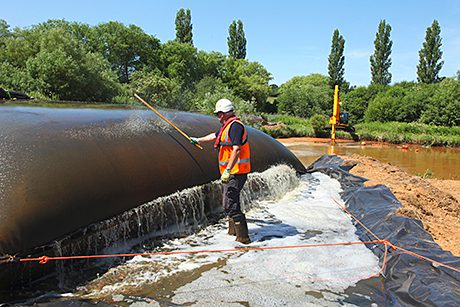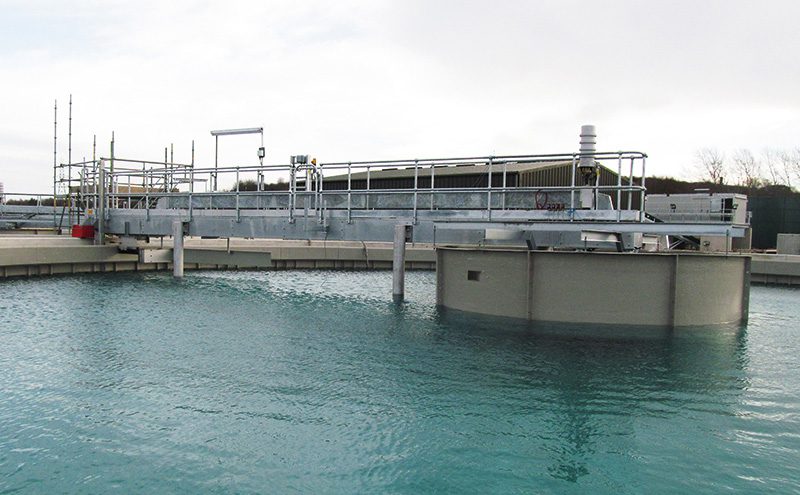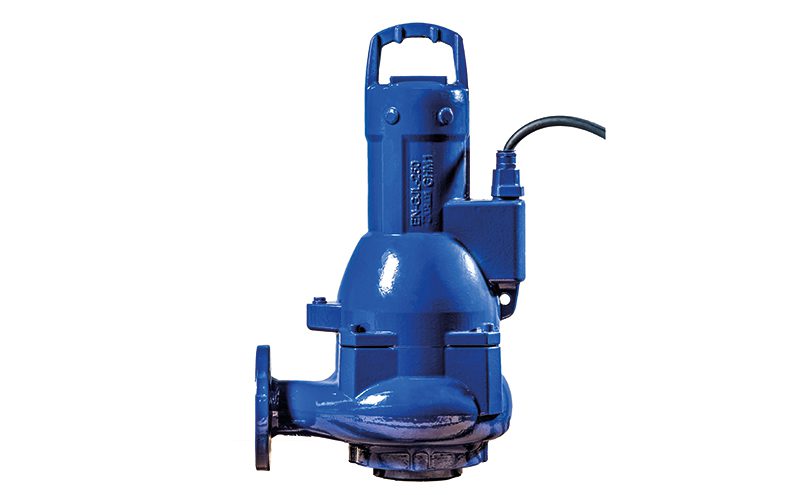
SURREY-headquartered Land and Water Services (LAWS) has been using Geotube® containers to dewater difficult sludges for Anglian Water Services.
On a live contract at Pitsford Water Treatment Works, the company has been using its own technology in combination with low-impact dredging techniques. The result, according to LAWS, has seen a substantial reduction in the overall quantities of difficult materials for disposal.
Dewatering dodge
Dredging can be conducted with the water remaining in the water body, avoiding the need for expensive dewatering, fish rescue and habitat protection measures. For larger contracts LAWS sometimes employs a road-transportable cutter-suction dredger, with a 10in suction head. The unit can achieve high dredge outputs in water depths from 600mm to 6m.
On smaller projects one of LAWS amphibious tool carriers can be equipped with a 4in capacity, boom-mounted, scroll-feed suction pump (see image, right). And on sites where bankside access is acceptable, a dipper-mounted, high-capacity sludge pump can be fitted to any of LAW’s 52 long-reach excavators.
The sludge mixtures are delivered via pipeline directly to the Geotube® containment system. Constant monitoring of the input feed pipes lets a process engineer adjust and inject the correct mix of polymers and coagulants to the pump mix just before it enters the bag. Once inside the bag the sludge and flocculent mix changes as free sludge particles bind, liberating clean water. The clean water is then ejected from the micro-pores of the Tencate Geotubes® container and returned to the water-body, leaving high concentrates of sludge within the container.

Soil in the bag
Whilst up to 99% of the particulates are retained within the bags, the bulk of the water is liberated instantly. After the final cycle of filling and dewatering, the solids remain in the bag and continue to increase in density due to desiccation as residual water vapour escapes through the fabric. When the bag is finally opened the sludge concentration has significantly increased leaving a dry “soil” to be excavated for recycling or controlled disposal.
Tube configuration
Geotubes® can be configured to suit individual sites with minimal space and/or differing sludge make-up with the help of expert technical and installation teams. The Geotubes® are arranged on a temporarily lined surface such that any clean waters that are released from the bags can be swiftly returned to the water-body under gravity. Where appropriate, drinking-water-quality polymers are used to ensure there will be no negative impacts for the originating water-body.
At Pitsford WTW, LAWS successfully completed the dredging and recovery of more than 2,500m3 of fine particle sediments, resulting in a final retained volume in the dewatered bags of less than 400m3. Steve Massey, Land and Water’s Divisional Business Manager commented on the use of this technology and the scope of its application: “This method delivers a solution to cwlients where they can dramatically reduce the quantity of sludge for disposal with minimal environmental impact in a quick and safe manner.”
Gary Cunliffe, Bio solids Recycling and Environmental Compliance Manager for Anglian Water Services, commented: “Using the Geotube technology will enable us to separate solids from liquid at site, providing savings on haulage and disposal costs and drastically reducing the carbon footprint of lagoon sludge dewatering.”






